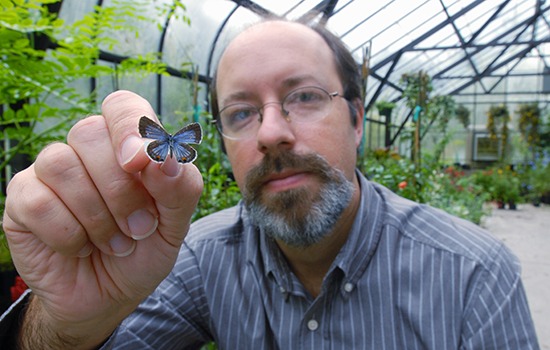8 Tips to Help Native Butterflies Thrive
When it comes to supporting native butterflies in your area, what you choose to plant in your garden can go a long way! As the coordinator for M&T Bank Butterflies LIVE! I was eager to chat with Dr. Jaret Daniels, a Lepidopterist and Entomology researcher at the University of Florida, who shared easy gardening tips that not only create beautiful green spaces, but also aid pollinators.
1: Pick Plants You Love and Include Natives
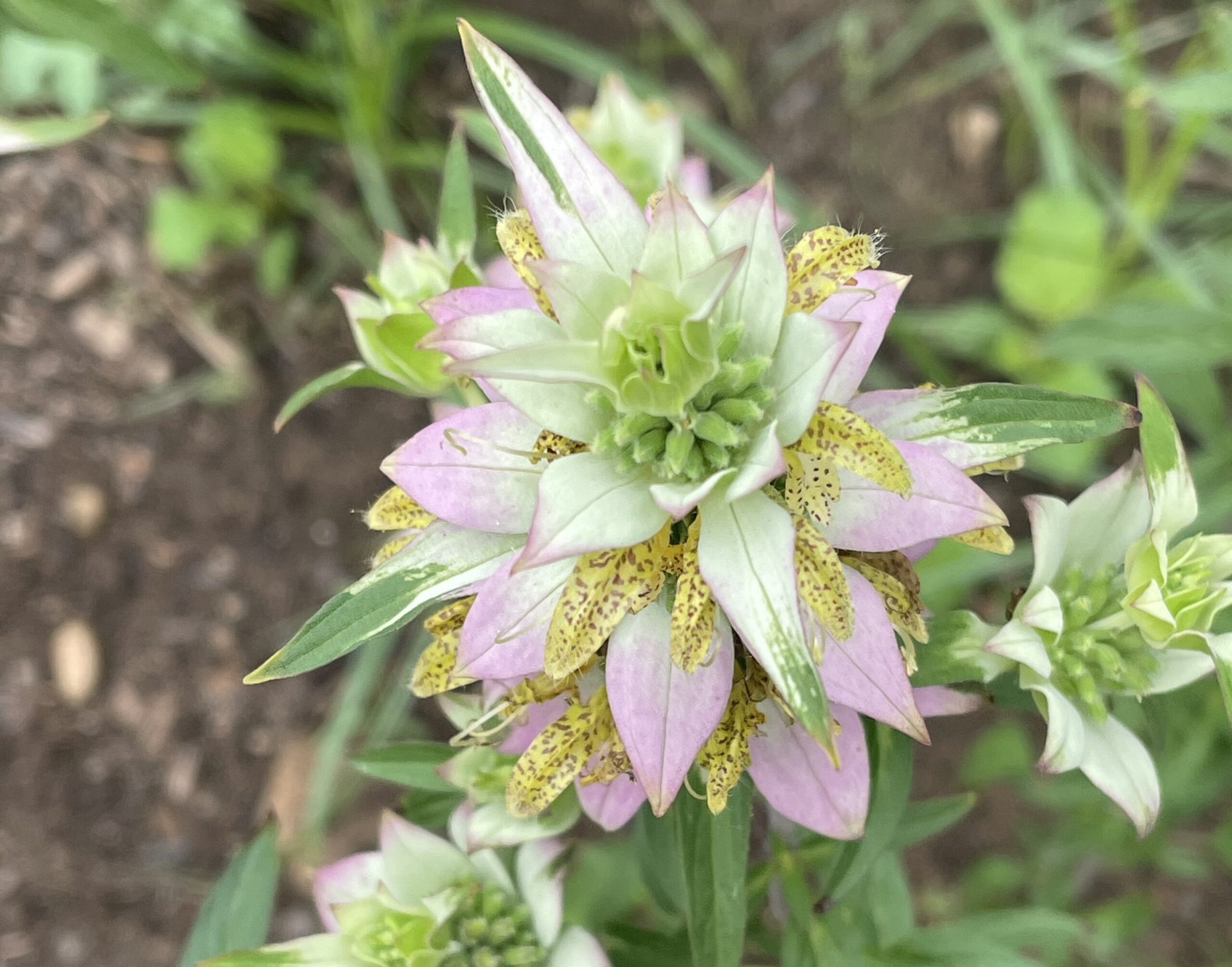
Spotted bee balm is a favorite of native butterflies in Virginia. Photo by Clara Aus.
“The first step to creating a successful pollinator garden is to pick out plants that you like and are motivated to care for,” says Dr. Daniels. “I recommend starting with plants that are easy to understand, are easy to grow, and have wildlife value.” Plants native to your area are a great resource for pollinators, like native butterflies, especially since many of them are host plants, but non-native plants can have value for pollinators, too! “Just be sure to avoid invasive species when you’re planting a garden and, where possible, diversify landscapes to include more natives as it will have positive effects on the environment and pollinating insects.” To see some native plants in action, be sure to check out the Morton Native Plant Garden here at Lewis Ginter!
2: Plant lots of plants!
Native butterflies will find your garden more easily if you have a greater abundance of flowering plants. You want to create what Dr. Daniels refers to as “billboards of color” that will be highly visible to the pollinators and easily accessible. Grouping multiple flowering plants together in bunches will make your garden more attractive to pollinators like butterflies and bees. “These are visually hunting insects in the landscape and those drifts of color also are more aesthetically pleasing to our eyes as well,” he says. Each nectar-producing plant has a limited amount of nectar available, so providing multiple sources of food is crucial to support them effectively.
3: Plant a variety of species
A diverse selection of plants will be more attractive to pollinators, and different butterflies look for flowers in certain colors or shapes to feed from. “Butterflies come in a wide variety of shapes and sizes!” notes Dr. Daniels. “Having a variety of different plants will attract a variety of species to your garden. Their behavior and the length of their proboscis determine what floral resources they can take advantage of.” Since some butterflies have a longer proboscis (a straw-like mouth), they are able to feed on longer flowers, while others have a shorter proboscis and are unable to feed from these flowers. “Try to diversify your landscape to maximize the potential for diverse pollinators. Many native butterflies have a flower color preference, so including multiple colors in your garden will increase support for a larger variety of insects.”
4: Plant flowering plants evenly
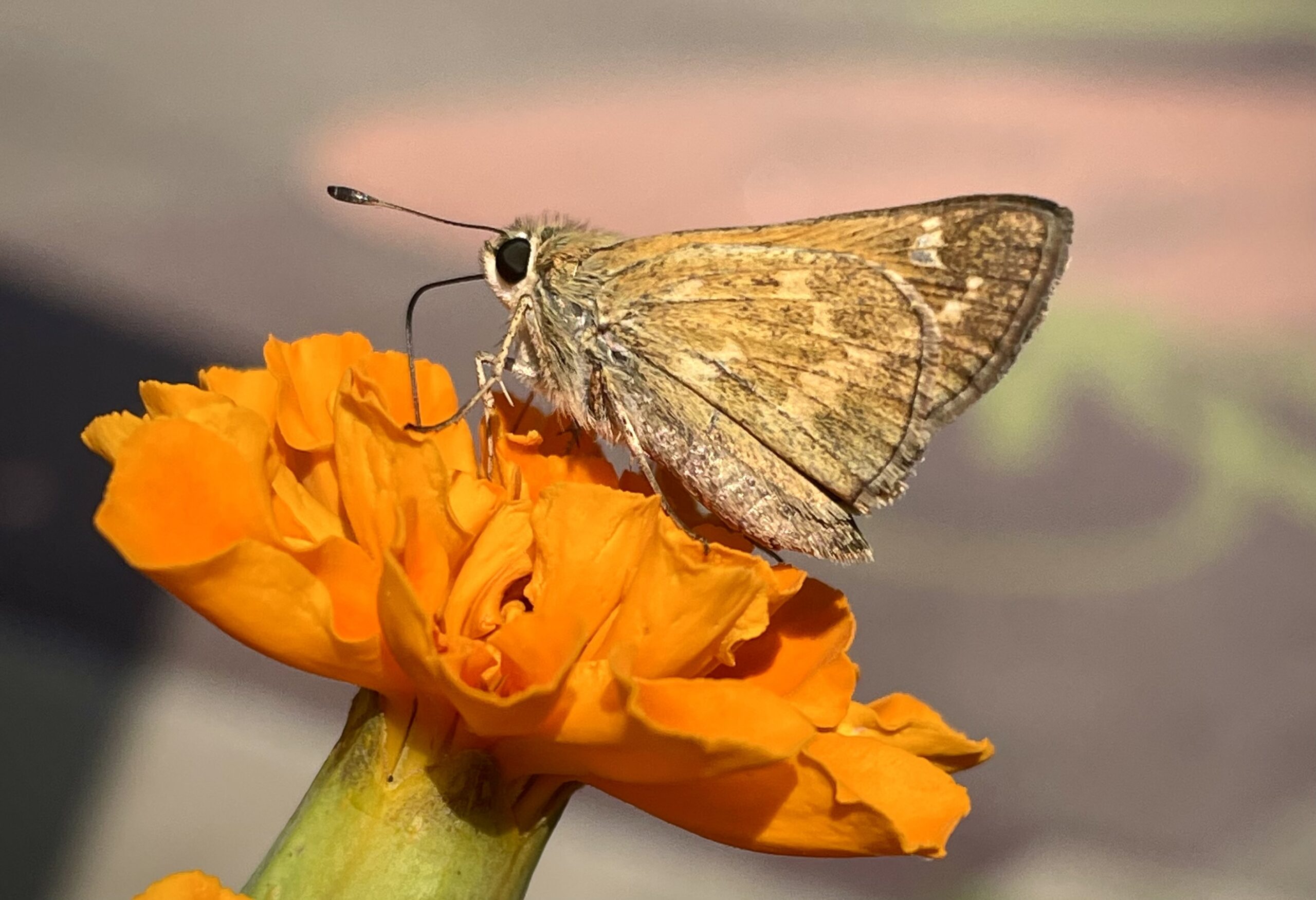
A skipper butterfly is feeds from a marigold bloom. Photo by Clara Aus
In a 2021 study called “Bloom evenness modulates the influence of bloom abundance on insect community structure in suburban gardens”, Dr. Daniels and his team found that bloom evenness is an important factor for butterflies choosing where to feed. Instead of picking out 100 different plants, he would recommend buying 10 plants each of 10 different species, creating a more evenly distributed landscape. “Instead of one of every kind making up 100, you have 10 plants of the same species with 10 species represented more broadly in your landscape,” he says. “Developing drifts or clusters of color of one plant species is a particularly good plan for attracting pollinators. Focus on maximizing the existence of a good plant in your landscape by creating an even distribution of the plant around the community.”
5: Reconsider how, where, and when you spray for mosquitoes
Spraying for mosquitoes can harm other insects, too! Mosquitoes can be a nuisance, as well as a vector for disease, so sometimes it is necessary to control their numbers in your yard. However, it is important to be as environmentally sensitive as possible, by being aware of the effects and how you can reduce the negative impact on pollinators before spraying. Look into companies that use a more targeted approach, like focusing on the larva of the mosquito instead of the adult. Insecticides that target the adult mosquitoes tend to affect other adult pollinators more broadly than the larva-specific treatments.
Did you know that mosquitoes eat nectar just like butterflies? Since mosquito spraying is done with a mist, it can easily travel into other areas and impact them as well. “With mosquito abatement, we should be mindful that there are going to be some casualties, and that our goal is to work with mosquito control to ensure that they’re applying the best practices,” says Dr. Daniels. “By working with mosquito control companies, we are also able to determine where and where not to spray, so that we can reduce the non-target impact, especially on critically threatened or endangered insects.”
6: Educate yourself on the issues butterflies and moths face
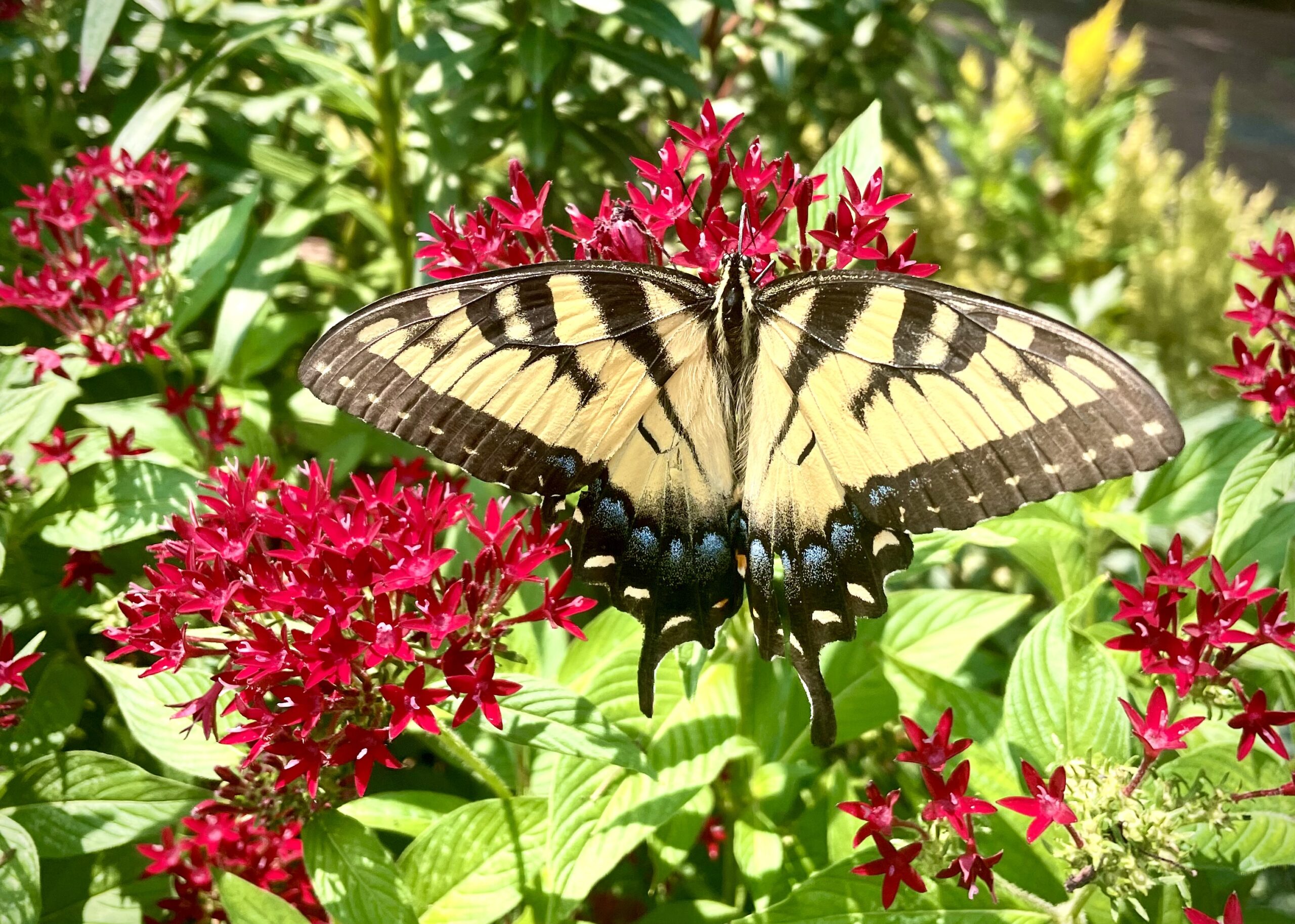
Native butterflies like the Eastern tiger swallowtail love flower nectar! Photo by Clara Aus
From climate change, to disease, to parasitism, educating yourself on important pollinator issues enables you to become a more knowledgeable gardener. Since butterflies have such quick life cycles with multiple generations per year, they tend to adapt more quickly to changes in the environment than many other animals. This combined with their strong connection to native host plants and nectar plants means that they are an important indicator of climate change in an ecosystem. Dr. Daniels points out that the reaction to climate change is “highly species specific” and varies depending on the characteristics of the species. “For example, some native butterflies may have an expanded suitable habitat range, while for others, it may be reduced.” Expect potential changes in which butterflies you see in your area.
7: Become a citizen scientist!
Researchers often rely on citizen scientists to help collect important data in the field, because it can be both expensive and time-consuming to complete a massive statewide or countrywide project without this assistance. Websites like iNaturalist and Citizen Science allow anyone to assist scientists with important research projects. “Assistance from citizen scientists enables that data to be collected more comprehensively, faster,” says Dr. Daniels. Citizen science projects could include anything from looking through pictures taken by a nature camera to mark which ones have butterflies present, to watching video footage of sharks in the ocean, to snapping pictures and identifying species near you. Not only does this help research efforts, “it also gets people out looking and exposing them to the natural world and turning them on to science. And then by doing what they love and contributing those data, it provides a wealth of information to scientists at a big data scale,” says Dr. Daniels. Citizen science is a great way to get involved in naturalistic observation and support researchers. “No matter what level you participate in, it has a lot of value!”
8: Keep pollinators outside
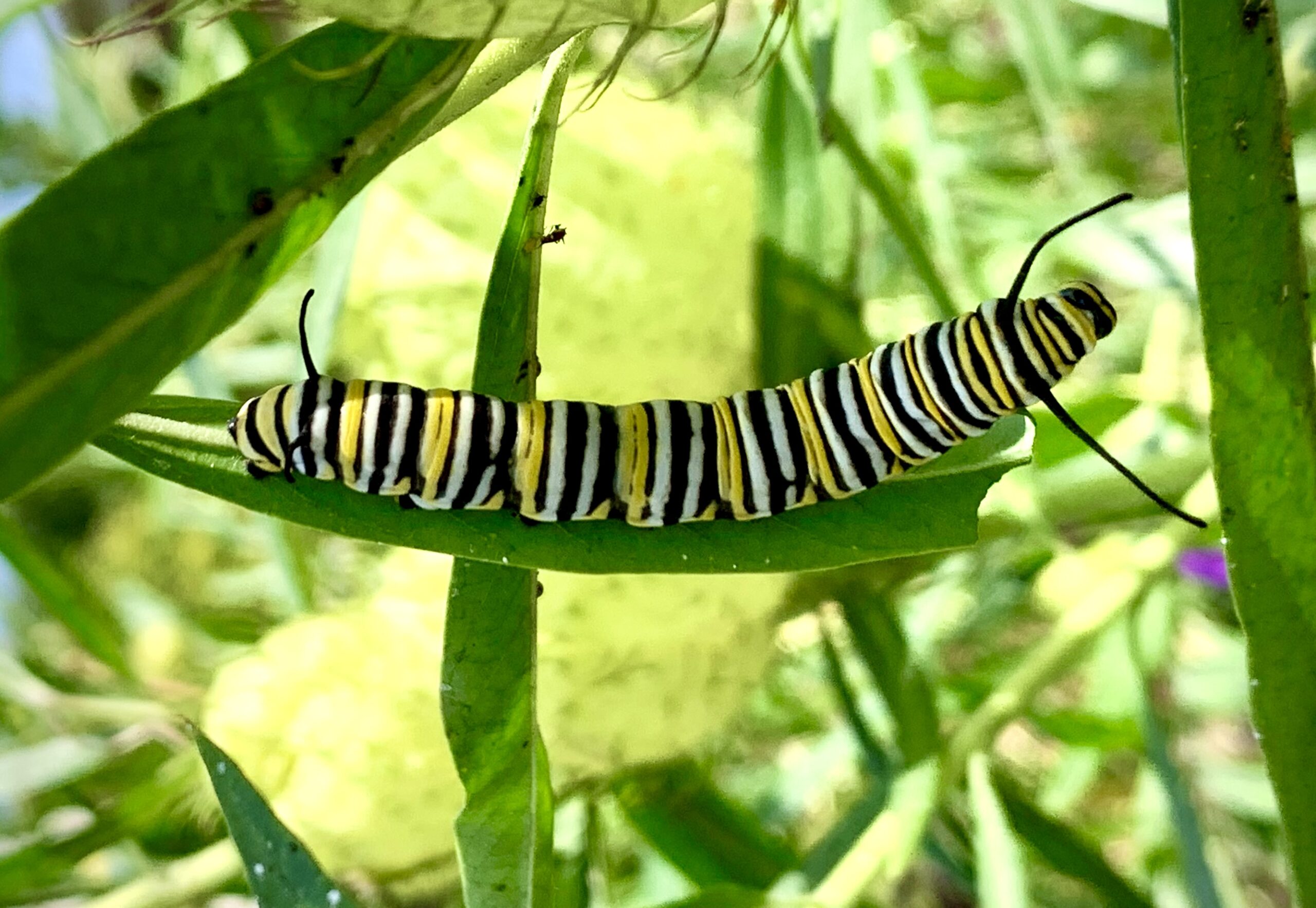
Monarch caterpillar feeding on milkweed plant. Milkweed is a host plant for multiple native butterflies to the United States and also supplies nectar to adults. Photo by Sylvia Dahlhauser
Although it can be really fun to raise caterpillars and watch them go through metamorphosis, more often than not it is better to leave them be. “For monarchs particularly, breeding them en masse and indoors can be detrimental for them,” explains Dr. Daniels. “It can make them more susceptible to certain diseases, it can make them less synchronous to when they need to migrate.” You can still enjoy the life cycle of these amazing insects without bringing them inside. If you plant a garden with host plants, butterflies will lay their eggs there and you can observe the cycle from egg to butterfly outside in nature where they are meant to be. “The goal should be building resources, building habitat, enjoying insects and the environment.”
Learn more about Dr. Jaret Daniels and the Daniels Lab research on their website!
